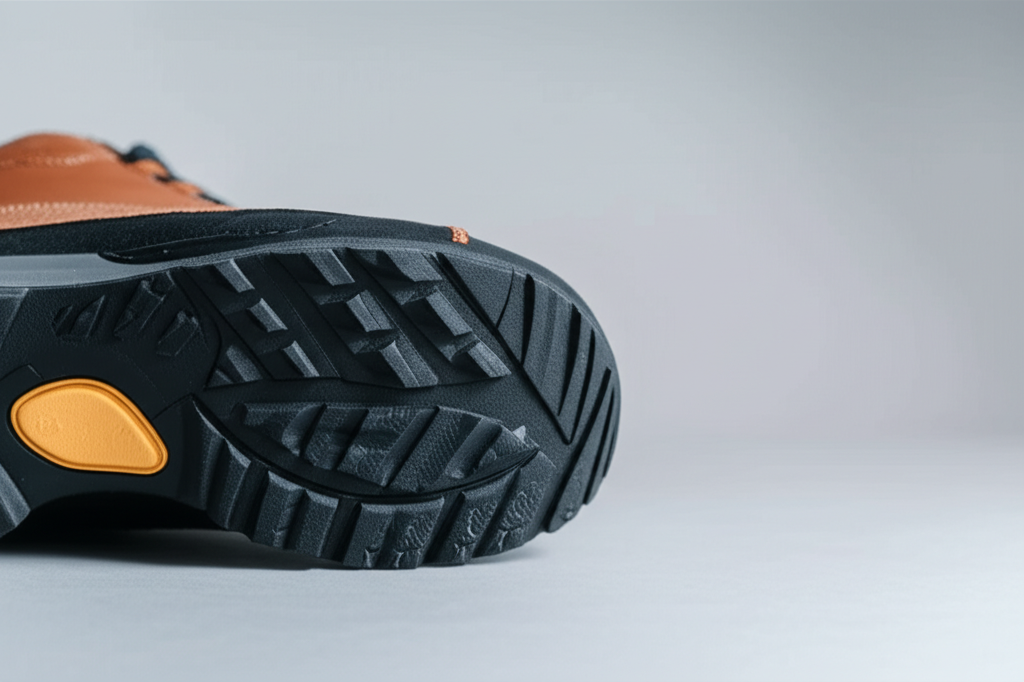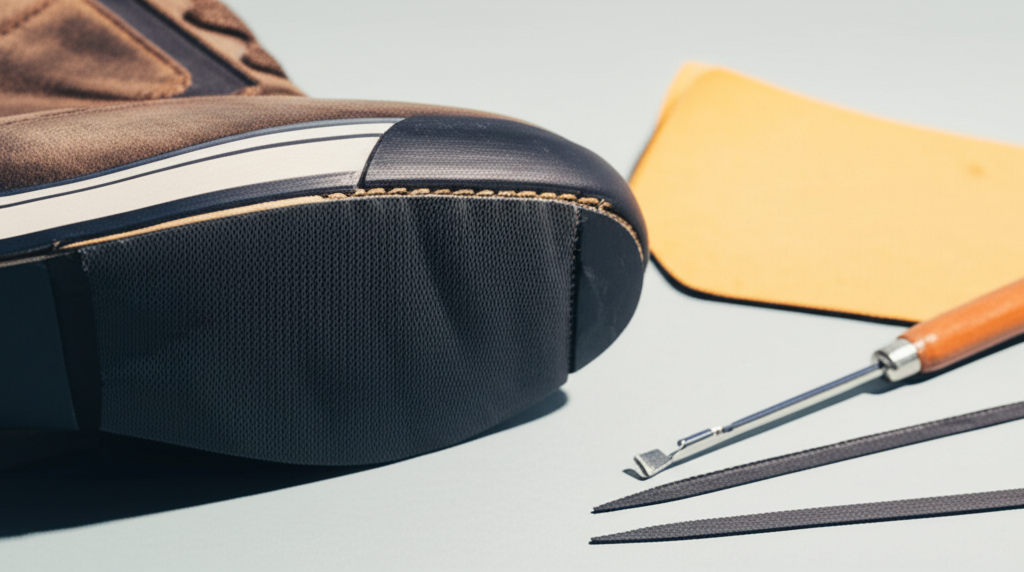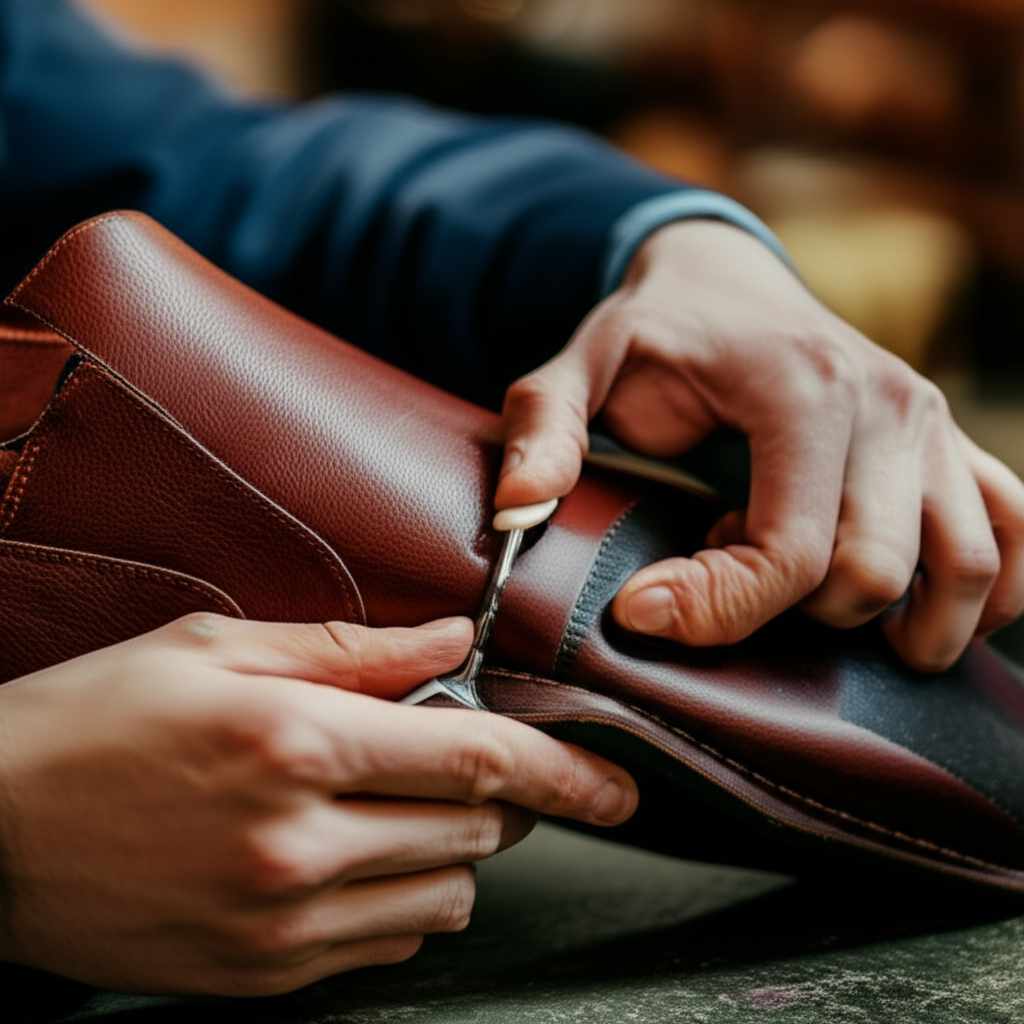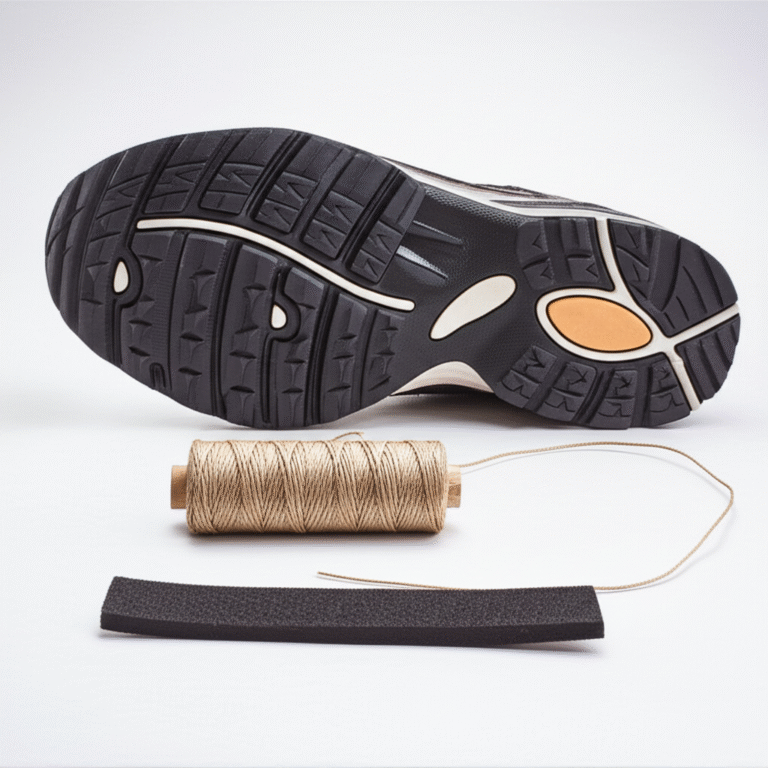Yes, walking shoes can often be resoled, offering an eco-friendly and cost-effective way to extend their lifespan. While not all walking shoes are designed for resoling, many high-quality pairs, especially those with a Goodyear welt or Blake stitch construction, present astonishing options for repair and renewal.
Key Takeaways
- Extend shoe life significantly.
- Save money on new footwear.
- Choose sustainable shoe repair.
- Explore diverse sole materials.
- Ensure proper shoe construction.
- Find skilled cobblers easily.
Can Walking Shoes Be Resoled? Astonishing Options for Durability and Sustainability
Are your favorite walking shoes starting to look a little worn out? Perhaps the soles are thinning, or the grip isn’t what it used to be. It’s a common dilemma many walkers face. You love the comfort and support your current shoes offer, but the thought of replacing them can be disheartening, both for your wallet and the environment. You might be wondering, “Can walking shoes be resoled?” The good news is, often, they can! This guide will explore the astonishing options available for resoleing walking shoes, helping you make informed decisions to keep your feet happy and your footwear going strong.
Understanding whether your walking shoes are candidates for resoling is the first step. It’s not as simple as taking any shoe to a cobbler. The construction method and materials play a crucial role. But don’t worry, we’ll break down what you need to know in clear, easy-to-understand terms, empowering you to give your beloved walking companions a new lease on life.
The Anatomy of a Walking Shoe: What Makes It Resoleable?

Before diving into the resoling process, it’s essential to understand the construction of your walking shoes. Not all shoes are built with repair in mind. The way the sole is attached to the upper of the shoe is the primary factor determining if it can be resoled. For beginners, think of it like building a house; some foundations are designed for easy renovations, while others are not.
Understanding Shoe Construction Methods
The most common and durable shoe construction methods that allow for resoling are:
- Goodyear Welt Construction: This is the gold standard for resoleable footwear. A strip of leather or rubber, called a welt, is sewn around the outside of the shoe, attaching the upper and the midsole. A second stitch then attaches the outsole to the welt. This creates a strong, flexible bond that can be easily disassembled and reassembled, making resoling straightforward. Many high-quality walking shoes and boots utilize this method.
- Blake Stitch Construction: In this method, the upper is directly stitched to the outsole through the insole. While not as robust as a Goodyear welt, Blake-stitched shoes can also be resoled. The stitch runs internally, so a cobbler can cut the old sole away and stitch a new one directly to the shoe’s upper and insole. This method often results in a more flexible shoe than Goodyear welting.
- Cemented Construction: This is the most common method for many athletic and casual shoes, including a vast majority of walking shoes. The sole is glued directly to the upper using strong adhesives. While effective for manufacturing and providing flexibility, cemented soles are very difficult, and often impossible, to remove and reattach without damaging the shoe. Therefore, cemented shoes are generally not resoleable.
- Strobel Construction: Common in running and athletic shoes, the upper is stitched to a fabric insole (the Strobel board) before being cemented to the midsole and outsole. Like cemented construction, this method makes resoling extremely challenging.
As a beginner, the easiest way to check your shoe’s construction is to look for a visible welt strip running around the edge where the sole meets the upper. If you see this, especially if it looks like a separate piece of material, there’s a good chance it’s Goodyear welted. For Blake stitch, you might not see a distinct welt, but the sole will appear to be directly stitched to the upper in a visible line. If the sole looks like it’s just glued on with no stitching visible from the outside, it’s likely cemented and not resoleable.
The Benefits of Resoling Your Walking Shoes
Choosing to resole your walking shoes offers a multitude of advantages, making it a smart choice for both your feet and the planet.
Cost Savings
Buying a new pair of quality walking shoes can be a significant investment. Resoling is almost always considerably cheaper than purchasing a brand-new pair. This allows you to maintain your comfortable, broken-in footwear for a fraction of the cost of replacement. For example, a good pair of resolable walking shoes might cost $150-$250, while a resole service could range from $50-$100, depending on the materials and cobbler.
Environmental Sustainability
The fashion industry, including footwear, has a substantial environmental footprint. By choosing to resole your shoes, you’re actively participating in a circular economy. You’re reducing waste by extending the life of your existing shoes, which means fewer shoes end up in landfills. This is a fantastic way to embrace sustainable practices without sacrificing comfort or style. According to the Environmental Protection Agency (EPA), footwear waste is a significant contributor to landfill volume, making repair and reuse a critical component of reducing this impact.
Maintaining Familiar Comfort and Fit
Walking shoes are personal. Over time, they mold to the unique shape of your feet, providing unparalleled comfort and support. When you buy new shoes, even of the same model, they rarely feel exactly the same until they are broken in. Resoling allows you to keep the perfectly molded interior and familiar feel of your favorite shoes, while getting a fresh, functional sole.
Performance and Durability
High-quality walking shoes built for resoling are often made with durable materials designed to withstand wear and tear. Resoling not only restores the sole’s function but also ensures the integrity of the shoe’s construction. A skilled cobbler can often replace worn-out components within the shoe, further enhancing its durability and performance.
Astonishing Options for New Soles

When you decide to resole your walking shoes, you’re not just getting the old sole back on. You have a variety of material options that can enhance your shoe’s performance, comfort, and longevity. These choices can be tailored to your specific walking needs and preferences.
Choosing the Right Sole Material
Here’s a look at some popular and effective sole materials:
| Sole Material | Pros | Cons | Best For |
|---|---|---|---|
| Vibram Rubber | Excellent grip, highly durable, water-resistant, good shock absorption. | Can be a bit heavier than other options. | All-terrain walking, hiking, wet conditions, everyday wear. |
| Commando Soles | Aggressive tread for superior traction, very durable, good for rugged terrain. | Can be stiff and heavier, may wear down smoother surfaces faster. | Trail walking, uneven surfaces, winter conditions. |
| Crepe Rubber | Soft, flexible, excellent cushioning, natural material. | Can wear down faster, tends to attract dirt and debris, not ideal for very wet surfaces. | Casual walking, comfort-focused wear, indoor use. |
| Dainite Rubber | Durable, good grip with small studs, water-resistant, less prone to picking up debris than crepe. | Less aggressive traction than commando soles, can be slightly stiffer. | Everyday walking, light trails, varied weather conditions. |
| Leather Soles | Classic look, can be very comfortable once broken in, breathable. | Less durable in wet conditions, can be slippery on smooth surfaces, requires more maintenance. | Formal walking, dry climates, preference for traditional footwear. |
When selecting a sole, consider where you do most of your walking. If you’re often on trails or in wet conditions, a durable rubber sole like Vibram or a Commando sole will provide the best grip and protection. For everyday urban walking where comfort is key, a softer crepe or a balanced Dainite sole might be ideal. Leather soles are less common for dedicated walking shoes but are an option if you’re resoleing a more traditional shoe that you also use for walking.
Adding Specialized Features
Beyond just the material, some resoling services offer additional features:
- Orthopedic Inserts/Arch Support: If you have specific foot issues, a cobbler can sometimes integrate custom orthotic supports into the shoe during the resoling process.
- Shock-Absorbing Midsole Replacements: Some services can replace or add cushioning layers to the midsole, providing enhanced shock absorption for those who need extra protection.
- Waterproofing Treatments: While the sole material itself can be water-resistant, some services can also re-treat or add waterproofing to other components of the shoe.
These specialized options mean that resoling can not only restore your shoes but also improve their function to better meet your individual needs.
The Resoling Process: What to Expect
Understanding the steps involved in resoling can demystify the process and prepare you for what to expect. It’s a skilled craft that breathes new life into footwear.
Finding a Reputable Cobbler
The quality of the resole heavily depends on the skill of the cobbler. Look for cobblers who specialize in resoling or shoe repair, especially those with experience in the specific construction method of your shoes (e.g., Goodyear welt). Online reviews, local recommendations, and specialized shoe repair shops are good starting points.
For those who don’t have a local expert, many reputable online resoling services exist. You mail your shoes to them, and they handle the repair. Brands like Red Wing Shoes, for example, offer resoling services for their boots, and many independent cobblers also have mail-in programs.
Step-by-Step Resoling Procedure
While the exact process can vary slightly between cobblers, here’s a general breakdown:
- Inspection: The cobbler will first examine your shoes to determine if they are resoleable and assess the overall condition of the upper, lining, and internal structure.
- Disassembly: The old outsole is carefully removed. For Goodyear welted shoes, the welt is often retained or replaced if damaged. For Blake stitched shoes, the old stitching is unpicked.
- Preparation: The shoe’s base is cleaned and prepared for the new sole. Any necessary repairs to the midsole or welt are made.
- Attaching the New Sole: The new outsole is attached. For Goodyear welts, this involves stitching through the welt and the new sole. For Blake stitches, a new stitch is sewn directly through the upper and the new sole. For cemented shoes (if somehow repairable), new adhesive is applied.
- Finishing: The edges of the new sole are trimmed, shaped, and often sealed or painted. The shoe is then cleaned and polished.
What If My Shoes Aren’t Resoleable?
As mentioned, cemented and Strobel-constructed shoes are generally not designed for resoling. If your walking shoes fall into this category, it’s usually not cost-effective or even possible to resole them without causing significant damage. In such cases, the best option is to look for new shoes that are either constructed for resoling or are of a quality that justifies their cost for their intended lifespan. When buying new, always inquire about the construction method if you plan to resole them in the future.
Pro Tips for Extending the Life of Your Walking Shoes

Whether your shoes are resoleable or not, proper care can significantly extend their lifespan and keep them performing at their best.
- Rotate Your Shoes: If possible, alternate between two or more pairs of walking shoes. This allows the cushioning and support materials to fully decompress and dry out between wears, preventing premature breakdown.
- Clean Regularly: Remove dirt and debris after each use, especially if walking in muddy or dusty conditions. Use appropriate cleaning products for the shoe’s materials.
- Dry Properly: Never dry wet shoes near a direct heat source like a radiator or in direct sunlight, as this can damage the materials and adhesives. Stuff them with newspaper to absorb moisture and allow them to air dry at room temperature.
- Use Shoe Trees: Cedar shoe trees absorb moisture and odor, and they help maintain the shoe’s shape, preventing creases and stretching.
- Inspect for Wear: Regularly check the soles for excessive wear, especially on the heel and forefoot, and the upper for any tears or damage. This helps you catch issues before they become irreparable.
Frequently Asked Questions About Resoling Walking Shoes
Can I resole any brand of walking shoe?
No, not all brands or models of walking shoes are designed to be resoled. It primarily depends on their construction method. Shoes made with Goodyear welt or Blake stitch construction are typically resoleable. Cemented or Strobel-constructed shoes generally are not.
How much does it cost to resole walking shoes?
The cost typically ranges from $50 to $100, depending on the cobbler, the materials chosen for the new sole, and any additional repairs needed. This is significantly less than the cost of a new pair of quality walking shoes.
How long does resoling take?
If using a local cobbler, it might take anywhere from a few days to a couple of weeks. Mail-in services can take longer, often 3-6 weeks, including shipping time.
Will resoling change the comfort or fit of my shoes?
Resoling will restore the function and grip of your sole, but it shouldn’t negatively impact the comfort or fit of the shoe’s interior, which has molded to your foot. In fact, some people find the refreshed sole provides a more stable and comfortable walking experience.
What if the upper of my walking shoe is damaged? Can it be repaired too?
Yes, skilled cobblers can often perform repairs on the upper, such as fixing tears, reinforcing worn areas, or replacing eyelets. However, if the upper is severely damaged or degraded, it might not be worth the cost of repair along with resoling.
Are there specific types of soles I should ask for when resoling?
You can choose from various materials like Vibram rubber, Dainite, Commando soles, or even crepe rubber, depending on your needs for grip, durability, and cushioning. Discuss your walking habits with your cobbler to choose the best option.
Where can I find a good cobbler to resole my walking shoes?
Look for cobblers with good online reviews, ask for recommendations from friends or local shoe stores, or check with brands that offer their own resoling services. Many reputable cobblers also have mail-in services available.
Conclusion
The question “Can walking shoes be resoled?” often brings up a world of possibilities for extending the life of your favorite footwear. For many, the answer is a resounding yes, thanks to durable construction methods like Goodyear welting and Blake stitching. By understanding your shoe’s construction and the benefits of resoling, you can make a choice that is kind to your wallet, your feet, and the environment. Exploring the astonishing options for new sole materials allows you to customize your shoes for optimal performance and comfort, ensuring your walking journeys remain enjoyable for years to come. So, before you toss those worn-out walking shoes, consider the incredible potential for renewal that a skilled cobbler can offer.

